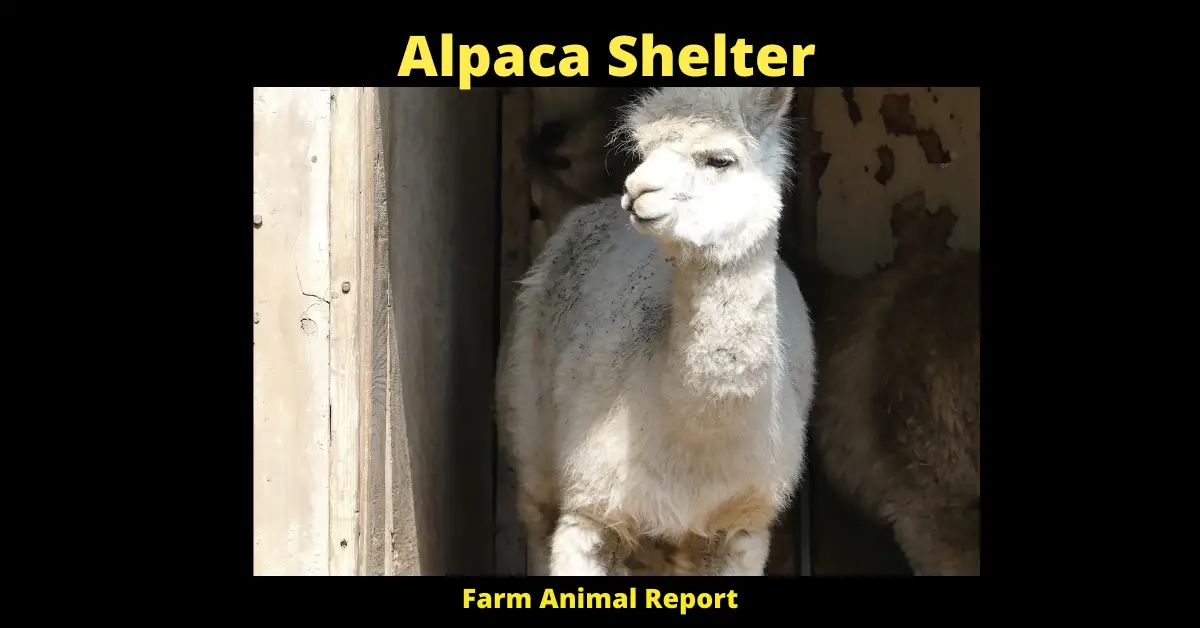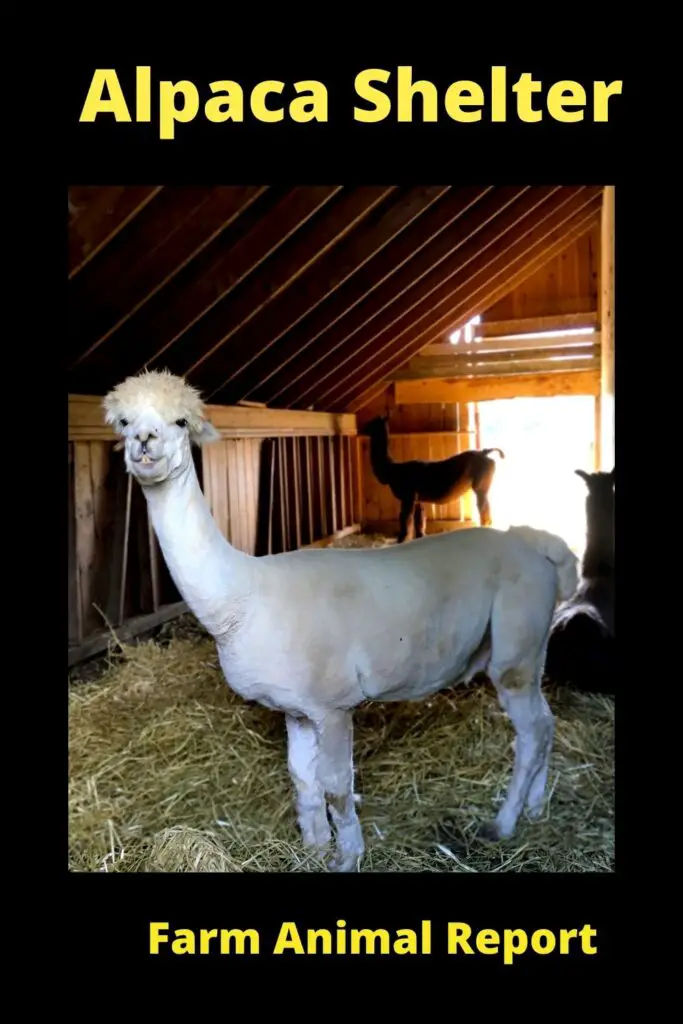As a General Rule Alpacas can do fine outside in average climates. If severe cold, Chill factors, Extreme heat, they will need shelter provided. They also need protection from predators such as dogs, coyotes, and foxes. Having a good shelter will protect them from the elements during storms or cold weather while keeping them safe at night when they graze on pastures without fences.
Alpaca Shelter
Alpacas are becoming more popular as pets, but they are still livestock animals. They need shelter to protect them from the elements and predators. There is a variety of different types of shelters that alpaca owners can provide for their animals. We will go over what each one offers and how it can be built or obtained for your farm. Alpaca Shelter
Check Out Amazon’s Educational Resources for Raising Alpacas
Why do you need to provide shelter for your Alpacas?
Alpaca Shelter- Alpacas are sensitive to temperature changes and will not thrive in extreme conditions. They also need protection from predators such as dogs, coyotes, and foxes. Having a good shelter will protect them from the elements during storms or cold weather while keeping them safe at night when they graze on pastures without fences. It is important that the shelter is big enough for the herd to move around comfortably.
Tips on how to create a good, safe environment for your alpacas
First, you need to decide whether or not your alpaca shelter will be an indoor or outdoor structure. Indoor shelters are better if they have adequate ventilation and proper drainage so the floor does not get wet. They should also have a sturdy door that is lockable for protection at night when it might be too dangerous for them to go outside.
The outdoor shelter should be built on a flat surface and not too near the edge of steep slopes. They need to have plenty of ventilation, but it is also crucial that they are protected from rain and other bad weather conditions. They also should have sturdy doors for protection at night just like an indoor structure would.
It is important to keep in mind that alpacas are not very good at regulating their body temperature. They sweat when they get hot, but then once the sun goes down or it starts raining outside they will have no way of cooling off until morning. This is why having a well-ventilated shelter is so important to them being comfortable during poor weather conditions.
18 ways Alpaca Farmers make Money
Second, you need to think about the size of your alpaca shelter. You should make sure that it is large enough for all of them to fit inside comfortably and not be overcrowded. If there are too many in a small space they will start getting on one another’s nerves. The flooring should also be strong enough so if an animal were to fall it would not break.
The shelter should be easy to clean and maintain so that you can regularly disinfect the flooring using a mild cleaning solution or bleach. It is important to make sure any materials used in building your alpaca shelter are safe for them if they were to chew on it. If there was something toxic inside of their space it could easily harm them.
Finally, you need to consider your alpaca shelter’s purpose. You can choose between a field shelter or an indoor/outdoor type of structure. Field shelters are meant for use during the day so that they have somewhere safe to stay while out in their pastures grazing.
They should be tall enough so that predators cannot jump inside and easily paw their way through the entryway. They also should be sturdy with a locking door so they can feel protected at night while out in an open pasture. It is important to keep them clean by hosing off any poo or mud on the ground outside of it regularly.
Indoor/outdoor alpaca shelters are meant for use as a home base that they can go into at night and during bad weather conditions. They should be sturdy enough so it will not collapse on them but also ventilated well to keep the inside cool in warmer climates. The flooring should have a good drainage system so there is no standing water after rainfall or snow that would make them get sick.
They should also be large enough to comfortably hold all of the alpacas that must go inside at night before they graze on pastures. It is important to keep in mind that if you live in a colder climate, your alpaca shelter will need additional insulation and thicker walls so it can stay warm during the wintertime.
How big should an alpaca shelter be?
The alpaca shelter should be big enough for the herd to move around comfortably. It also needs to have a sturdy door that is lockable for protection at night when it might be too dangerous for them to go outside. The outdoor flooring should be strong with good drainage so they stay dry during rain or snowfall. Make sure any materials used in building your alpaca shelter are safe for them if they were to chew on them.
The shelter should be easy to clean and maintain so that you can regularly disinfect the flooring using a mild cleaning solution or bleach. It is important to make sure any materials used in building your alpaca shelter are safe for them if they were to chew on it. If there was something toxic inside of their space it could easily harm them.
For a single Alpaca, you need a shelter that is about 12 square feet. For a group of alpacas, you need at least 30 square feet for each animal in the herd.
For a single Alpaca, their shelter should be around twelve square feet and anything less than ten will not provide them with enough space to move comfortably. A minimum of thirty square feet per alpaca is needed for a group. It’s also important to make sure that the alpaca shelter can be cleaned and disinfected easily so that it remains free of germs or bacteria.
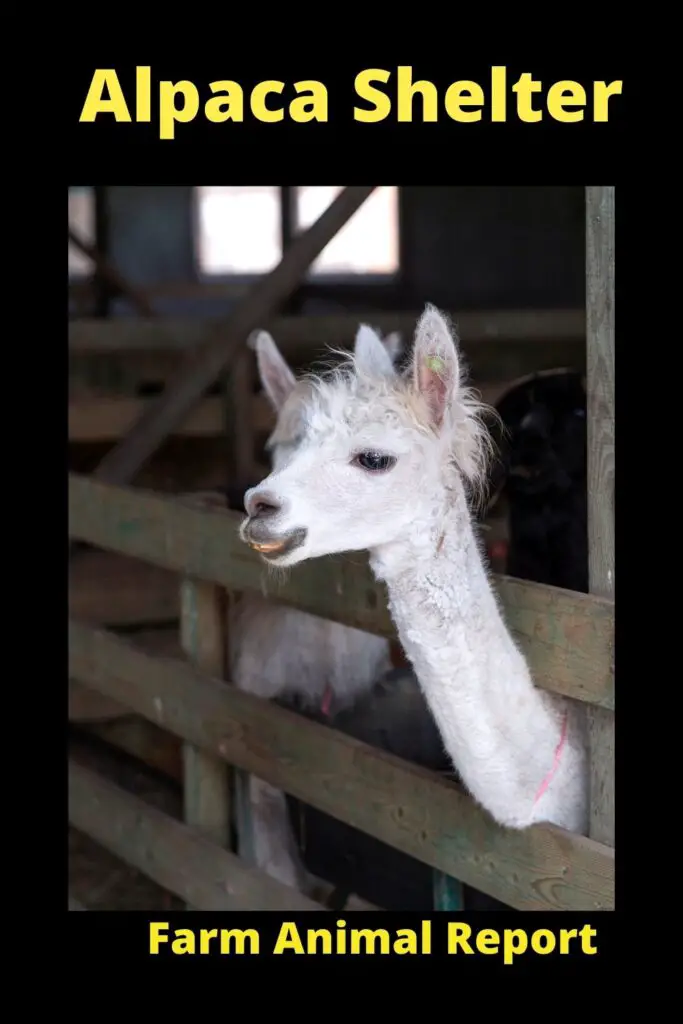
How much space do you need for 2 alpacas?
As a rule of thumb, you need 30 Sq Ft for each Alpaca for example
1) 1 Alpaca would need 30 Sq Feet
2) 2 Alpacas would need 60 Sq Feet to be comfortable
You also need to take into consideration if other livestock will be sharing the shelter such as goats.
Height of Fence is Best for Alpacas?
Alpacas are not jumpers so you don’t have to worry about them getting over the fence. They actually prefer a shorter, well-maintained fence that has some type of barrier at least six inches above ground level with either barbed wire or electric fencing with two hot wires on top and bottom.
This is because alpacas are very likely to try and head butt or charge an animal that is taller than them. They are very curious animals by nature, so if the fence was not tall enough it would be easy for them to get out of their enclosure with little effort.
4′ to 5′ in height is best for alpacas.
Types of fences include
- Woven Wire
- Electric Fences
- Barbed Wire ( Not Recommended because of Fleece)
- Wood
- Steel
What is too Cold for an Alpaca?
Alpacas come from a very cold climate – the Andes of Peru so they are accustomed to cold weather, but under the right conditions, they also can become overheated and get sunburned or dehydrated easily.
Alpacas can handle temperatures as low as 0 degrees Fahrenheit, but they need shelter from the wind and rain if it is below freezing so their fur doesn’t get wet because that could cause them to become sick. They should be given a thick layer of shavings such as straw or wood chips in their shelter to stay warm.
You can also provide them with a small heater or electric blanket during cold nights so they don’t get too cold. Alpacas are very sensitive animals, so you need to monitor how much heating is provided and make sure it doesn’t cause humidity problems in the air which could result in pneumonia or respiratory illness.
Very Windy conditions can amplify the cold and cause Alpacas to chill quickly.
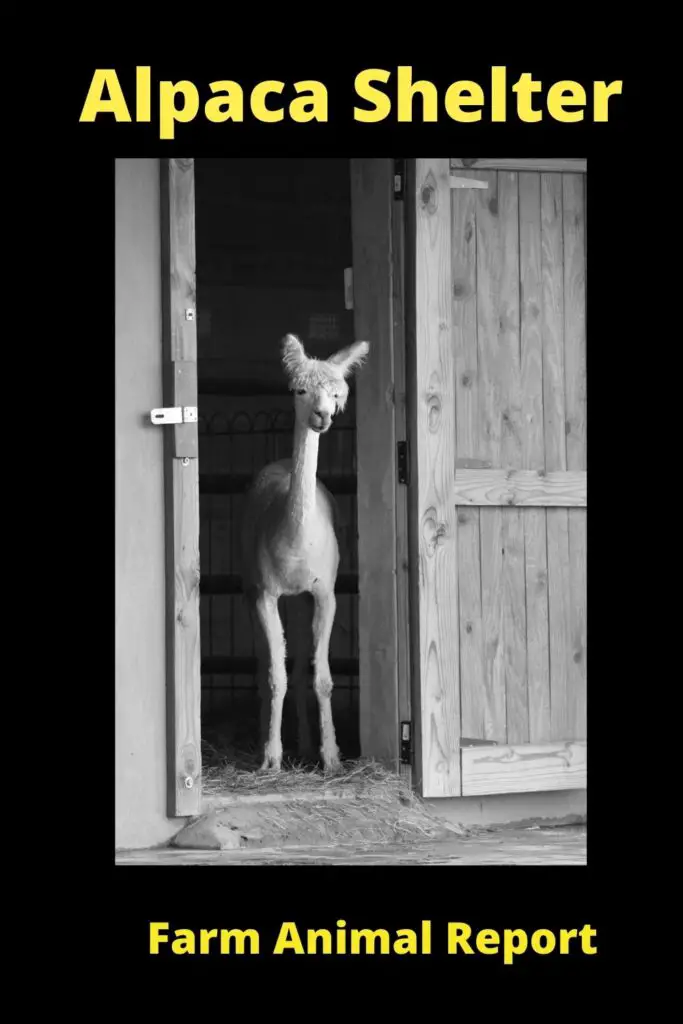
What is too Hot For an Alpaca?
Alpacas can handle hot weather, but they need shade and plenty of water to stay healthy.
If the temperature is over 95 degrees Fahrenheit for an extended period it could cause heatstroke or sunburn which would result in skin damage that may be irreversible if you don’t bring down their body temperatures quickly.
Provide them with a large area with a roof that is covered in shade and put some type of fans around the shelter to circulate airflow. You can also provide them with plenty of water so they don’t get dehydrated as well as ice cubes which will help keep their temperatures down if it gets too hot outside.
Alpacas are very sensitive animals, so you need to monitor how much cooling is provided and make sure it doesn’t cause humidity problems in the air which could result in pneumonia or respiratory illness.
They need to be sheared at least once a year to help them adapt to the hot weather.
Many Alpaca farmers shear their alpacas in the spring when it begins to warm up and in the fall before winter sets in so that they don’t become too hot during the summer.
If you do shear your alpacas, make sure you take extra precautions if their coats are cut shorter than usual because this makes them more susceptible to sunburns or skin irritation. You need to keep them out of direct sunlight for a few weeks until their coats grow back completely.
Alpacas will seek shelter if they feel like it is too hot outside but you still need to monitor them closely and make sure they don’t get overheated or dehydrated which could result in death especially during the summer months.
It Helps then that their fleeces become longer as winter approaches
Types of shelter for alpacas
Alpaca Shelter Plans
If you are looking for something more sturdy then alpaca shelter plans would work well. These plans come with detailed instructions on how to build your own alpaca shelter. Even if you are not good at building, these kits will have everything needed for a successful build. These shelters can be made out of wood or metal depending on the preference of the owner and may include an outdoor run area.
Field Shelters
A Field Shelter for an alpaca can consist of nothing more than a run-in shed, a lean-to shed, or a small barn.
Field shelters can be made out of wood and metal depending on the preference of the owner and may include an outdoor run area. They are often used when alpacas have access to other pastures because they just need protection from severe weather conditions that might occur in one area but not another shed with no walls.
This type of shelter is ideal for mild climates or areas where alpacas are allowed to graze freely during the day but need protection from predators at night.
Field shelters can also be made out of wood and provide shade as well as wind blockage which will keep your animals warm on colder days and cool on hotter ones.
Field shelters are inexpensive to construct, but you should only use them during warmer months because they do not protect alpacas from the elements very well which could cause illness or death if used for an extended period of time.
If you are looking for something more sturdy then alpaca shelter plans would work well. These plans come with detailed instructions on how to build your own alpaca shelter.
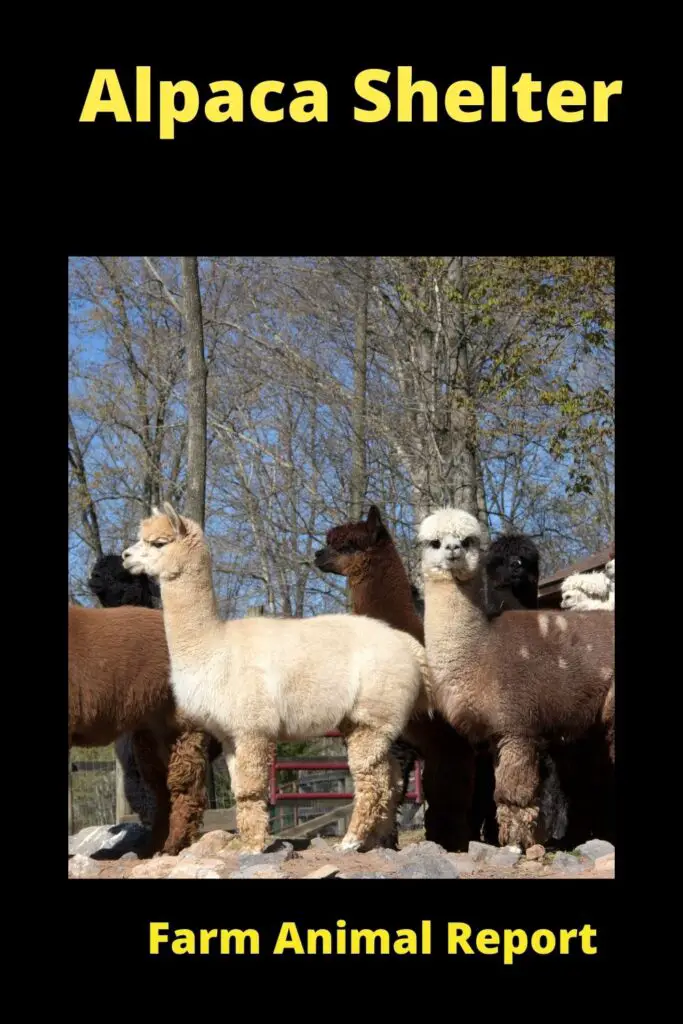
Natural Shelter
A Natural Shelter for alpacas can be anything that is natural like rocks, trees, or cliffs.
These can be found in mountainous regions where alpacas will graze during the day and return to the area when it gets dark because they are protected by steep hillsides or rocky outcroppings.
Natural shelters provide adequate shelter for your animals but you should make sure there isn’t any danger of animals or people falling off cliffs because alpacas are known to wander around freely.
A Place where they can be shielded from wind, extreme heat, and cold naturally is great. This type of natural shelter can provide relief from the elements but does not protect your alpacas from any predators which may be lurking around.
Natural shelters are usually very effective because they provide protection for your alpacas from the elements but can also become dangerous if people or other animals get too close to them which could result in injury or death.
Barn Shelters
For a permanent shelter, many farmers use barn shelters for alpacas.
These structures can be made of wood and metal, depending on the preference of the farmer but usually have hay storage areas as well as bale feeders that are attached to one or more walls inside so animals do not need to go outside during feeding time.
Barns provide protection from extreme weather conditions and can be designed with windbreaks on at least one side of the building.
Barns are great for alpacas that do not live in mild climates because they will provide protection from predators as well as harsh weather conditions like snow, rain, and heatwaves.
Although barns work very well for most farmers who keep their animals indoors or in small herds, they can be quite expensive to construct.
Barns are made out of wood and metal depending on the preference of the owner but usually have hay storage areas as well as bale feeders that are attached to one or more walls inside so animals do not need to go outside during feeding time.
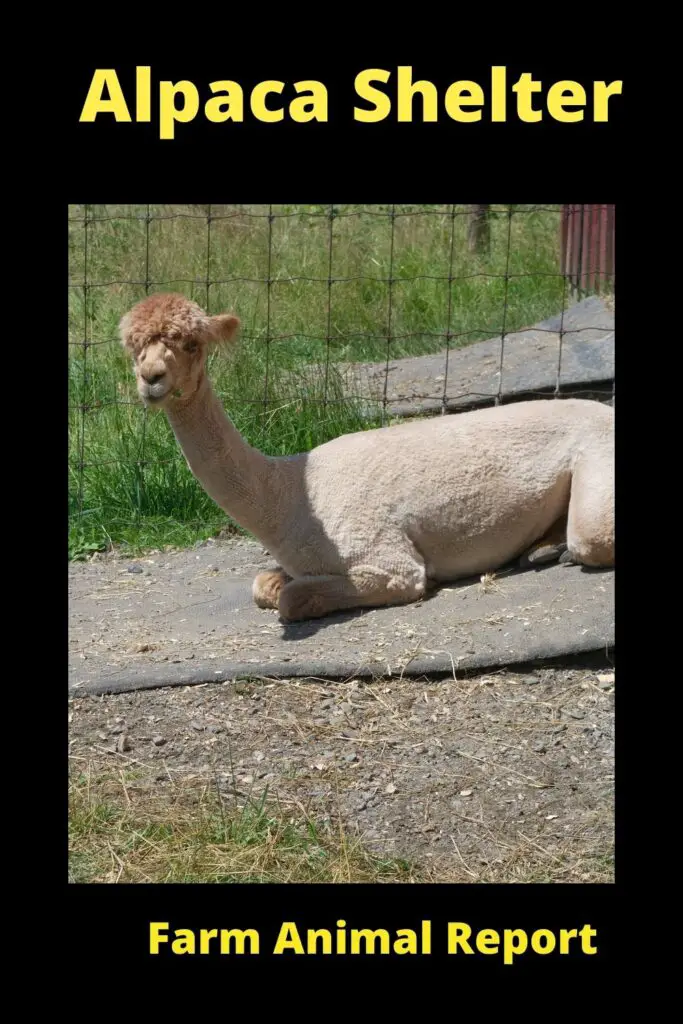
They can be made so the Alpaca can have easy access to food, water, and shelter. And they also can be shut in during harsh weather.
Barn shelters are very effective because they protect your animals from harsh weather conditions as well as predators which can cause illness or death if not kept safe.
They work best for alpacas that live in mild climates but can be expensive to construct and may have a large carbon footprint depending on the materials used so you should consider how much land is available before constructing one.
They can be made from wood and metal but it will depend on the preference of the owner, hay storage areas as well as bale feeders are attached to walls inside so animals do not need to go outside during feeding time.
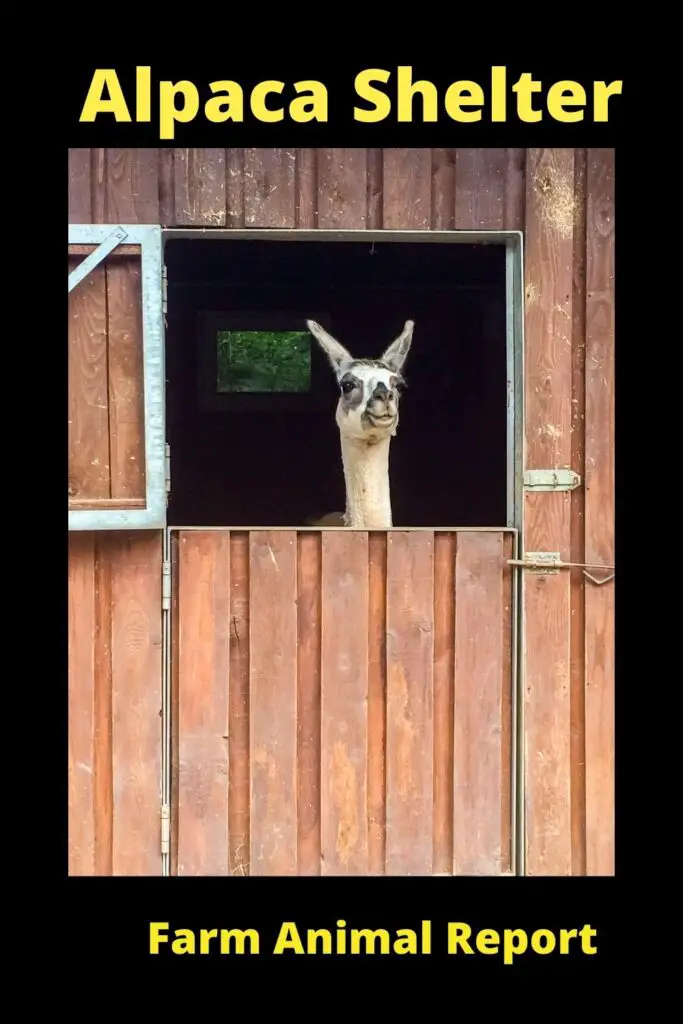
Final Thoughts
Alpacas are very resilient animals, but you need to take thought and provide shelter for them when it is needed.
The type of shelter you provide for your alpacas will depend on the climate and land available.
Each kind has its advantages and disadvantages, but adequate shelter is very important to keep your animals safe from predators as well as harsh weather conditions that could cause illness or death if they don’t have access to a proper place of refuge.


